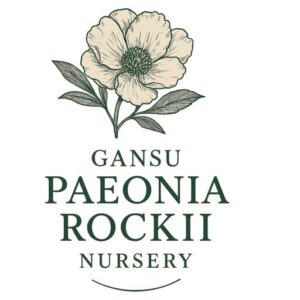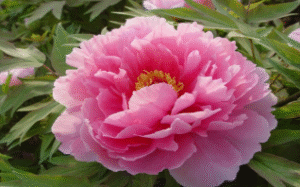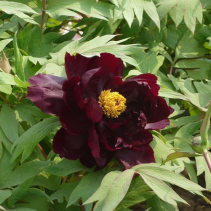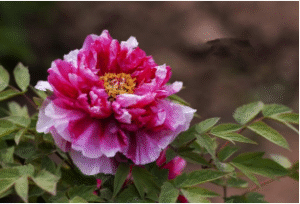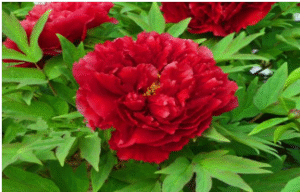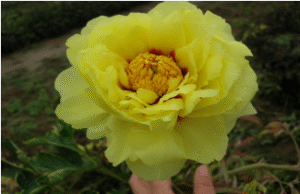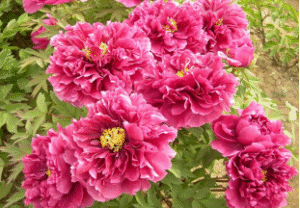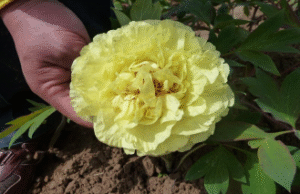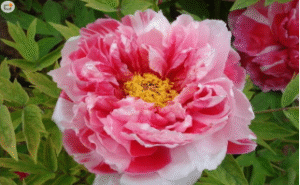What is Japanese tree Peony?
The Japanese Tree Peony (Paeonia suffruticosa, Japanese: moutan) is a woody perennial plant prized for its large, elegant blooms and graceful appearance. Unlike herbaceous peonies, which die back to the ground each winter, tree peonies have woody stems that persist year-round, making them a more permanent and structural feature in the garden.
What sets Japanese tree peonies apart is their refined floral form and upward-facing blooms, which often appear in early to mid-spring. The flowers can measure 6–10 inches across, with delicate, silky petals in a wide range of colors—white, pink, red, purple, and even yellow. Some varieties are sweetly fragrant, adding another layer of appeal.
These peonies are deeply embedded in Japanese culture and aesthetics, frequently depicted in traditional art, textiles, and seasonal celebrations. They symbolize wealth, honor, and feminine beauty, and are a common motif in ikebana (Japanese flower arranging).
In terms of care, Japanese tree peonies prefer a location with morning sun and afternoon shade, well-drained soil, and protection from harsh winds. Once established, they are remarkably hardy and long-lived—some can bloom beautifully for 50 years or more. Though they grow slowly at first, patience is rewarded with stunning blooms that return each spring.
Because of their upright growth and sculptural form, Japanese tree peonies are often planted as focal points in borders, near patios, or in traditional Japanese-style gardens. Whether you’re a plant collector or simply seeking an elegant statement flower, Japanese tree peonies are an exceptional choice for both beauty and meaning.
Why are Japanese tree peonies popular in ornamental gardening?
Japanese tree peonies are widely admired for their graceful, upward-facing blooms and intricate petal structures, making them a centerpiece in many ornamental gardens. Unlike other flowering shrubs, they offer a unique blend of form, color, and cultural meaning. Their blooms can reach up to 10 inches across, available in a range of colors from soft pink to deep purple, and often emit a subtle fragrance. In Japanese culture, these peonies symbolize nobility and prosperity, often featured in traditional art and ceremonies. Gardeners also value them for their longevity—once established, a Japanese tree peony can bloom for decades with minimal maintenance.
When do Japanese tree peonies bloom?
They typically bloom in mid to late spring, around April to May depending on your climate. Their blooms are some of the earliest among peony varieties.
Can Japanese tree peonies grow in pots?
Yes, but it’s not ideal for long-term growth. They require large, deep containers with excellent drainage. In-ground planting is recommended for better root development and bloom production.
What growing conditions do Japanese tree peonies prefer?
They thrive in well-drained soil with full morning sun and afternoon shade. Avoid planting them in soggy or heavily shaded areas.
How are Japanese peonies different from herbaceous peonies?
Japanese tree peonies have woody stems that remain year-round, while herbaceous peonies die back in winter. Tree peonies also bloom earlier and produce larger flowers.
How long do Japanese tree peonies live?
With proper care, they can live for decades—often 50 years or more. Their blooms improve with age, making them a long-term investment for gardeners.
